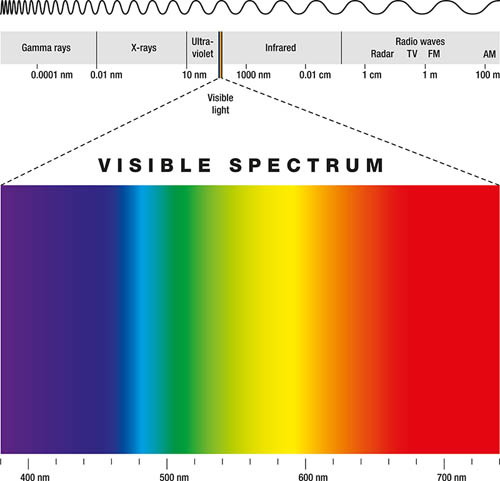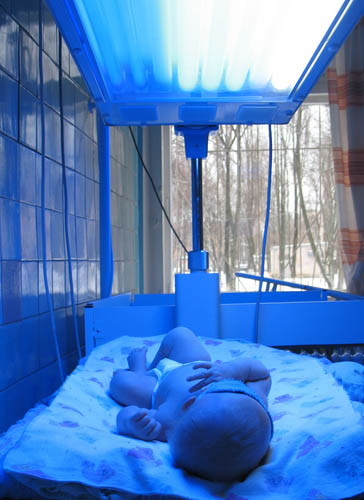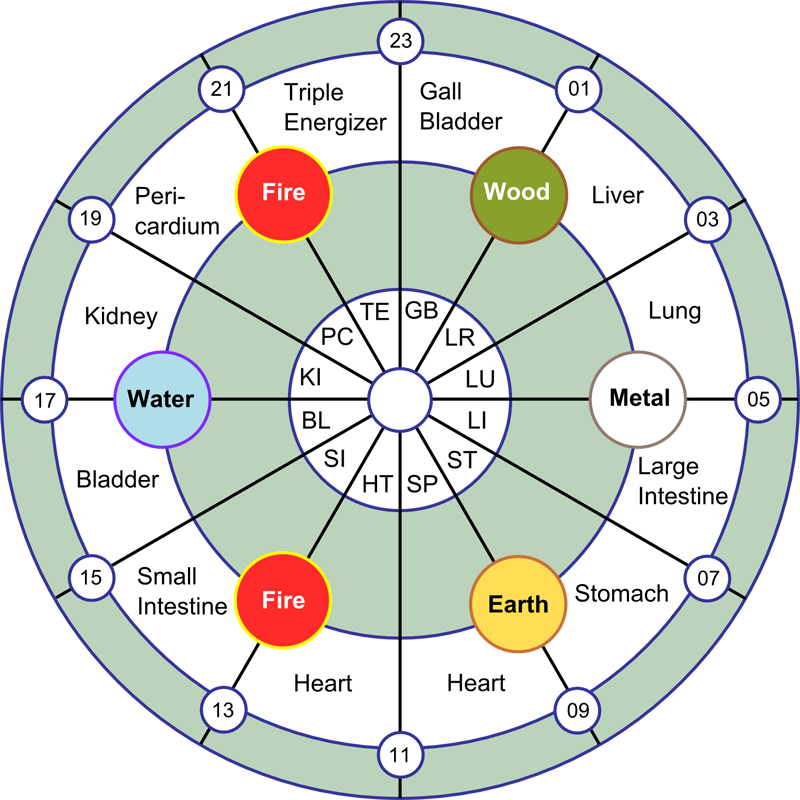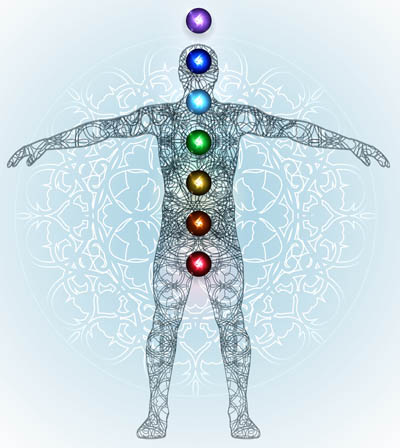
 Color energy comes to earth in the form of electromagnetic vibrations contained in white light.
Light is a small part of all electromagnetic radiation, It is sensed by the eyes and interpreted by the brain to produce the visual sensation of images in color.
To see color we need light, without light there is no color. Light rays themselves are not colored but each visible waveband produces a different sensation in our brain.
Sunlight contains all colors of light which when combined make white light. Red is the longest wavelength and the slowest vibration whereas violet has the shortest wavelength and the highest vibration.
White light is actually made up of a wide range of colors mixed together. This can be seen if we pass white light through a glass prism. (Discovered by Issac Newton)
Color energy comes to earth in the form of electromagnetic vibrations contained in white light.
Light is a small part of all electromagnetic radiation, It is sensed by the eyes and interpreted by the brain to produce the visual sensation of images in color.
To see color we need light, without light there is no color. Light rays themselves are not colored but each visible waveband produces a different sensation in our brain.
Sunlight contains all colors of light which when combined make white light. Red is the longest wavelength and the slowest vibration whereas violet has the shortest wavelength and the highest vibration.
White light is actually made up of a wide range of colors mixed together. This can be seen if we pass white light through a glass prism. (Discovered by Issac Newton)
How Color Energy Is Absorbed
 1) Through our eyes. We can absorb the healing effects of color simply by looking at different colored objects or colored lights.
The energy from colored light travels to the pituitary gland. These visible rays of color increase and stimulate the production of hormones that regulate a wide variety of bodily functions.
2) Color is absorbed by the skin and effects every cell in our body, all cells are light sensitive so the vibrations of color affect their growth and behavior causing fine biochemical changes to take place. Not only plants, animals and humans but even bacteria and chemicals show changes in behavior when exposed to different colors.
3) Color and light are absorbed by the human energy field.
1) Through our eyes. We can absorb the healing effects of color simply by looking at different colored objects or colored lights.
The energy from colored light travels to the pituitary gland. These visible rays of color increase and stimulate the production of hormones that regulate a wide variety of bodily functions.
2) Color is absorbed by the skin and effects every cell in our body, all cells are light sensitive so the vibrations of color affect their growth and behavior causing fine biochemical changes to take place. Not only plants, animals and humans but even bacteria and chemicals show changes in behavior when exposed to different colors.
3) Color and light are absorbed by the human energy field.
 Inside every human being there is a network of nerves and sensory organs that interpenetrates the outside physical world. At the same time within us resides a subtle system of channels and centers of energy (Meridians and Chakras) that look after our physical, intellectual, emotional and spiritual wellbeing.
Meridians are energy channels through which “Chi” flows is specific patterns or pathways. If the meridian is clear, then energy can flow through contributing to a health system. This is the basis behind Chinese Medicine. If a meridian is blocked the energy cannot flow through as easily and if left untreated will begin to present as a physical symptom in the body. There are 14 meridians, 12 of them being major and they exist in pairs. One being Yin energy which is feminine , passive , dark and yielding, the other being Yang which is masculine which is strong, light, hard and pushing. Each Meridian is also associated with organ, time of day, season, climate, color, taste, sense and sound. In Color Therapy the Meridians can be treated by balancing them with their corresponding colors.
Inside every human being there is a network of nerves and sensory organs that interpenetrates the outside physical world. At the same time within us resides a subtle system of channels and centers of energy (Meridians and Chakras) that look after our physical, intellectual, emotional and spiritual wellbeing.
Meridians are energy channels through which “Chi” flows is specific patterns or pathways. If the meridian is clear, then energy can flow through contributing to a health system. This is the basis behind Chinese Medicine. If a meridian is blocked the energy cannot flow through as easily and if left untreated will begin to present as a physical symptom in the body. There are 14 meridians, 12 of them being major and they exist in pairs. One being Yin energy which is feminine , passive , dark and yielding, the other being Yang which is masculine which is strong, light, hard and pushing. Each Meridian is also associated with organ, time of day, season, climate, color, taste, sense and sound. In Color Therapy the Meridians can be treated by balancing them with their corresponding colors.
Meridian Clock

The Chakras
The Aura has seven layers, the outer auric layers being concerned with the soul and spirit , while the inner layers relate to the mind, emotions and health. The shape is oval , surrounds the whole of the physical body and to some it looks like a heat haze radiating around the person, that shimmers with light and energy. The Aura is composed of every color imaginable. One of the main functions is to draw in white light , breaking it down to its components color energies to send to the appropriate body energy centers called the “Chakras.” The Chakras exist on the etheric plain and resemble whirling wheels of energy. All Chakras interpenetrate each other and each one corresponds to nerve ganglia, where there is a high degree of nervous activity and also to glands in the endocrine systems, they are not synonymous with any portion of the physical body, but exist within the subtle body. The Chakras are aligned in an ascending column that start from the base of the spine to the top of the head. Their function is to spin and draw in “Chi” or Life Force Energy to keep the spiritual, mental, emotional and physical health of the body in balance. Chakras can be open or closed, excessive or deficient, or any of the various stages in between. There are many ways to work with and balance the Chakras system. Chromotherapy is one of the very effective and powerful ways to work with this system. “If we consider that a large percentage of our information comes to us in visual form, and that visual form is perceived as patterns of color, the subtle changes in frequency exhibited by light must have an enormous effect on our minds and bodies.” Author Anodea Judith Ph.D.The Chakra System:
Chakra One: Earth and Survival
Name: Root Sanskrit Name: Muldhara Chakra Gua: Wealth Element: Earth Location: Coccyx, Perineum – Base of Spine Color: Red Musical Note: C – Do Stone / Crystal: Obsidian, Jet Hematite Essential Oila: Basil, Cinnamon, Frankincense, Clove, Vetiver, Patchouli. Pine Balanced Attribute: Survival, Vitality, Reality, Grounding, Security, Support, Stability, Sexuality, Individuality, Courage, Impulsiveness, Stability Function: Survival, Grounding Emotion: Passion or Scattered Energies Glands: Adrenals Associated Body Parts: Spine (Chi, Life Force) Legs, Feet, Bones, Teeth, Large Intestines, Prostate, Bladder, Blood, Circulation, Tailbone Malfunction: Anemia, Fatigue, Obesity, Anus, Rectum (hemorrhoids), Constipation, Colds, Body Temperature, Bladder Infection, Rebuilds Blood Cells & Haemoglobin, Sciatic, Numbness, Leukemia, Weight Problems, Sciatica, Knee Problems Nature Therapy: Gardening, Hiking and Earth Sitting
Chakra Two: Water and Sexuality
Name: Spleen – Sacral Sanskrit Name: Svadhishthana Chakra Gua: Family Element: Water Location: Lower Abdomen – Below the Navel Color: Orange Musical Note: D – Re Stone / Crystal: Garnet, Ruby Essential Oils: Bergamot, Lemon, Neroli, Clove, Grapefruit, Ginger, Jasmine, Sandalwood, Ylang Ylang Balanced Attribute: Feelings, Emotions, Intimacy, Procreation, Polarity, Sensuality, Confidence, Sociability, Freedom, Movement, Sexuality Function: Desire, pleasure, sexuality, procreation Emotion: Emotions, Desires or Sexual Dysfunction Glands: Ovaries, Testes Associated Body Parts: Ovaries, Testes, Womb, Kidneys, Urinary Tract, Skin, Spleen, Gallbladder, Recharges Etheric Body/Aura Malfunction: Impotence, Frigidity, Ovaries, Uterine Problems, Candida, Eating Disorders, Drug Use, Depression, Alcoholism, Polarity Imbalances, Gout, Allergies, Asthma (Oxygen Deficiencies), Bladder Problems, Low Back Issues Nature Therapy: Sexual Expression and Creative Expression
Chakra Three: Fire and Will
Name: Solar Plexus Sanskrit Name: Manipura Chakra Gua: Career Element: Fire Location: Solar Plexus, Stomach Color: Yellow Musical Note: E – Mi Stone / Crystal: Tigers Eye, Yellow Calcite Essential Oils: Grapefruit, Orange, Bergamot, Vetiver, Geranium, Neroli, Cypress, Pine Balanced Attribute: Personal Power, Will, Knowledge, Wit, Laughter, Mental Clarity, Humor, Optimism, Self-Control, Curiosity, Awareness, Self-Esteem Function: Will power, assertivness Emotion: Purpose, Sunshine or Low Self Esteem Glands: Pancreas, Adrenals Associated Body Parts: Digestion, Liver, Stomach, Diaphragm, Nervous System, Pancreas, Metabolism, Small Intestines Malfunction: Ulcers, Diabetes, Hepatitis, Hypoglycemia, Blood Sugar Disorders, Constipation, Nervousness, Timidity, Addictions to Stimulants, Parasites & Worms, Toxicity, Jaundice, Poor Memory, Digestive Disorders Nature Therapy: Sunshine, Sunbathing and Practicing Healthy Boundaries
Chakra Four: Love and Balance
Name: Heart Sanskrit Name: Anhata Chakra Gua: Relationships Element: Air Location: Center of Chest Color: Green Musical Note: E – Mi Stone / Crystal: Malachite, Rose Quartz Essential Oils: Eucalyptus, Roman Chamomile, Clove, Rose, Jasmine, Pine, Cedarwood Balanced Attribute: Relationships, Love, Acceptance, Self-Control, Compassion, Guilt, Forgiveness, Harmony, Peace, Renewal, Growth, Self- Love Function: Love Emotion: Balance, Love or Depression Glands: Thymus Associated Body Parts: Heart, Bronchia, Thymus Gland, Arms, Hands, Respiratory, Hypertension, Muscles, Circulatory System Malfunction: High Blood Pressure, Passiveness, Lethargy, Asthma, Immune System, Breathing Difficulties, Pneumonia, Emphysema, Cell Growth, Muscle Tension, Heart Problems, Chest Pain, Lung Disease Nature Therapy: Self-Time and Pampering Yourself
Chakra Five: Sound and Communication
Name: Throat Sanskrit Name: Vishuddha Chakra Gua: Children / Creativity Element: Sound Location: Throat Color: Bright Blue Musical Note: G – Sol Stone / Crystal: Sodalite Essential Oils: Geranium, Vetiver, Peppermint, Rose, Roman Chamomile Balanced Attribute: Communication, Wisdom, Speech, Trust, Creative Expression, Planning, Spatial, Organization, Caution Function: Communication, Creativity Emotion: Expansion, Healing or Shy and Withdrawn Glands: Thyroid, parathyroid Associated Body Parts: Throat, Vocal System, Mouth, Jaw, Parathyroid, Tongue, Neck, Shoulders, Lymph (Perspiration), Atlas, Menstrual Cycle, Lungs, Sinuses, Thyroid Malfunction: Thyroid, Flu, Fevers, Blisters, Infections, Herpes, Itching, Sores, Tonsillitis, Toothaches, OCD, Speech Disorders, TMJ, Hyperactivity, Melancholy, Hormonal Problems, Swelling, Hiccups, PMS, Mood Swings, Sore Throat, Stiff Neck, Colds, Thyroid Problems, Hearing Problems Nature Therapy: Singing Chanting Toning and Meaningful Discussions
Chakra Six: Light and Intuition
Name: Brow – Third Eye Sanskrit Name: Anja Chakra Gua: Knowledge / Spirituality Element: Light Location: Forehead Color: Indigo Musical Note: A – La Stone / Crystal: Azurite, Lapis Lazuli Essential Oils: Lavender, Myrrh, Frankincense, Jasmine, Nutmeg, Roman Chamomile, Clary Sage, Sandalwood Balanced Attribute: Intuition, Invention, Psychic Abilities, Self Realization, Perception, Release, Understanding, Memory, Fearlessness Function: Seeing, Intuition Emotion: Imagination, Intuition or Lack of Direction Glands: Pituitary Associated Body Parts: Eyes, Nose, Ears, Sinuses, Cerebellum, Pineal, Forebrain, Autonomic Nervous System, Heals Etheric Body/Aura Malfunction: Blindness, Vision, Headaches, Migraines, Earaches, Nightmares, Sleep Disorders, Fear, Manic Depression, Anxiety, Schizophrenia, Paranoia, Equilibrium Imbalances, Nightmares, Eyestrain, Blurred Vision Nature Therapy: Dreaming of Possibilites Releasing Preconceived Notions
Chakra Seven: Thought and Consciousness
Name: Brow – Crown Sanskrit Name: Sahasrara Chakra Gua: Fame Element: Thought Location: Top of Head Color: Violet, White Musical Note: B – Si Stone / Crystal: Amethyst Ametrine Essential Oils: Lavender, Jasmine, Frankincense, Clary Sage, Atlas Cedarwood, Roman Chamomile, Sandlewood, Ylang Ylang Balanced Attribute: Knowingness, Wisdom, Inspiration, Charisma, Awareness, Higher Self, Meditation, Self Sacrificing, Visionary, Divine Connection Function: Seeing, Understanding Emotion: Bliss, Spirituality or Cynicism Glands: Pineal Associated Body Parts:Upper brain, Cerebral Cortex, Cerebrum, Pituitary, Central Nervous System, Hair Growth, Top of Head Malfunction: Depression, Alienation, Mental Illness, Neuralgia, Confusion, Senility, Veins, Blood Vessels, Lymphatic System, Bacteria, Warts, Skin Rashes, Eczema, Boredom, Apathy, Inability to Learn Nature Therapy: Meditation Looking to the Heavens Cloud Watching Star Gazing
Balancing the Chakras
 The Chakras can be open or closed, excessive or deficient, or any stages in between. If a Chakra is ailing, it may be unable to changes its state easily and can be stuck in either an open or closed state. The Chakra then needs healing by uncovering and removing whatever may be blocking it. Through Chromotherapy where there are depletions or excesses of any color energy within the Chakras, balance and replenishment can be achieved by reintroducing the appropriate color utilizing Light Therapy, Color Acupuncture, Color Reflexology, Color Breathing, Meditation, Affirmations, Color Scarves, Colored Glasses, Dress, Diet, and Solorized Water.
The Chakras can be open or closed, excessive or deficient, or any stages in between. If a Chakra is ailing, it may be unable to changes its state easily and can be stuck in either an open or closed state. The Chakra then needs healing by uncovering and removing whatever may be blocking it. Through Chromotherapy where there are depletions or excesses of any color energy within the Chakras, balance and replenishment can be achieved by reintroducing the appropriate color utilizing Light Therapy, Color Acupuncture, Color Reflexology, Color Breathing, Meditation, Affirmations, Color Scarves, Colored Glasses, Dress, Diet, and Solorized Water.
